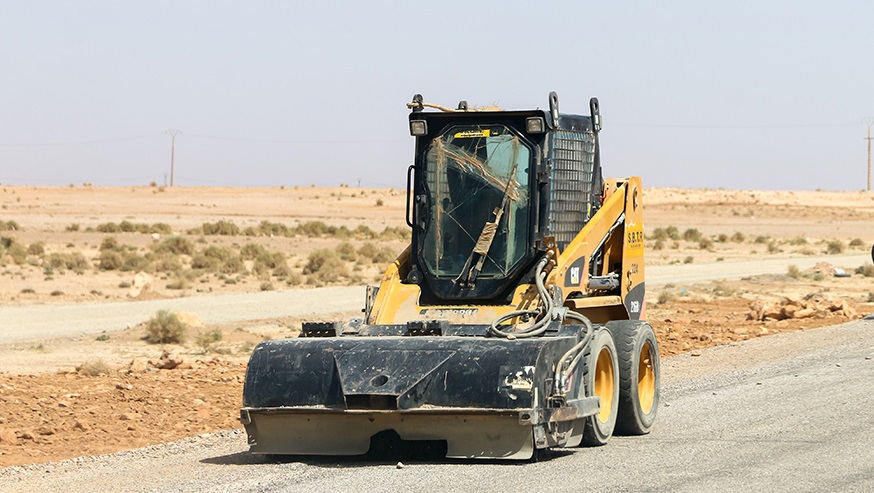
The continued growth in sales volumes of Skid Steer Loaders (SSL) and Compact Tracked Loaders (CTL) announced by major OEM brands (Case, Caterpillar, John Deere, Kubota, JCB, New Holland, Takeuchi, Wacker Neuson and many others) is no longer a surprise since long time. Main advantages offered by these machines are versatility, compactness and lower acquisition and operating costs in comparison with larger equipment.
Versatility is often considered to be the primary benefit because operators can easily hook up, besides traditional buckets, a wide range of specialized attachments like brooms, forks, augers, breakers, cutters, snow plows, mulchers and many others more to perform different kind of operations. Further flexibility is given by the presence of an industry standard for quick attach systems that gives the opportunity to mix quite freely different brands of machines and attachments and to change tools really quickly. In addition, ease of transport to and from jobsites and excellent maneuverability in small spaces are the reasons explaining great efficiency and productivity ensured by this machinery as well as its constant success in the rental market.
Nonetheless, a consolidated trend is clearly visible: year over year OEM’s keep developing ever lighter and more powerful compact loaders to meet a growing demand for machines to be used for more and more applications, especially related to Construction Equipment and Forestry segments.
All of the main manufacturers sell SSL and CTL machines equipped with auxiliary hydraulics yet installed, to power attachments in the quickest and most comfortable possible way. Individual flat face (ISO 16028) quick-release couplings are today installed typically on basic models, whereas the most common auxiliary hydraulics type is represented by cast iron blocks hosting connect under pressure (CUP) couplings.

Delving into the Components of Auxiliary Hydraulics in SSL and CTL
Further, there are generally two options available for the different machine models: standard or high flow. Standard-flow circuits (16-26 GPM) fit most of the types of implements, like pallet forks, trenchers, augers, buckets and hammers while high-flow hydraulics (27-45 GPM) are needed to operate tools like mulchers, brush cutters, grinders, cold planers, rock saws and snow blowers that need some extra horsepower coming from higher hydraulic flow rate. It’s extremely important to verify preliminarily that a CTL (or a SSL) and an attachment are compatible with regard to hydraulic flow features, because running a low flow attachment on a high flow machine (or vice versa) will result in loss of efficiency or, in a worse scenario, in damages to the equipment or safety risks for the operators.
Need Reliable Hydraulic Attachments? Explore Our Huge Range of Solutions
Discover durable and efficient hydraulic couplings designed to enhance your equipment's performance.
Discover Now
The Faster Approach to Auxiliary Hydraulics for SSL and CTL
Faster offers the most complete range of quick couplings and cast iron blocks suitable to CE and Forestry applications, capable of meeting any needs regarding flow rate as well as connection and disconnection of auxiliary hydraulics in presence of trapped line pressure. Thanks to a patented decompression system implemented into cast iron blocks operators don’t even need to know whether there’s trapped pressure into the circuit or not, because pressure relief occurs automatically with no difference in connection effort between the two situations perceivable by the operator.

Maintenance and Repair Advice
Seals, cartridges and rear adapters are serviceable components that can be quickly and simply replaced by users in order to restore, whenever necessary, full efficiency of auxiliary lines blocks. Both the general product catalogue and the company website (“Accessories & Spares” section) help to identify the correct service part to order. Increased service life makes these outstanding items even more attractive to end users!
Ready to learn more about our products?
Our team is here to guide you and offer tailored solutions to fit your needs.
Contact Us